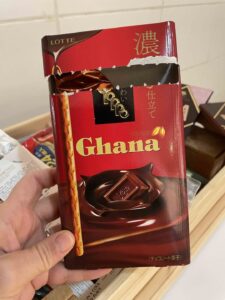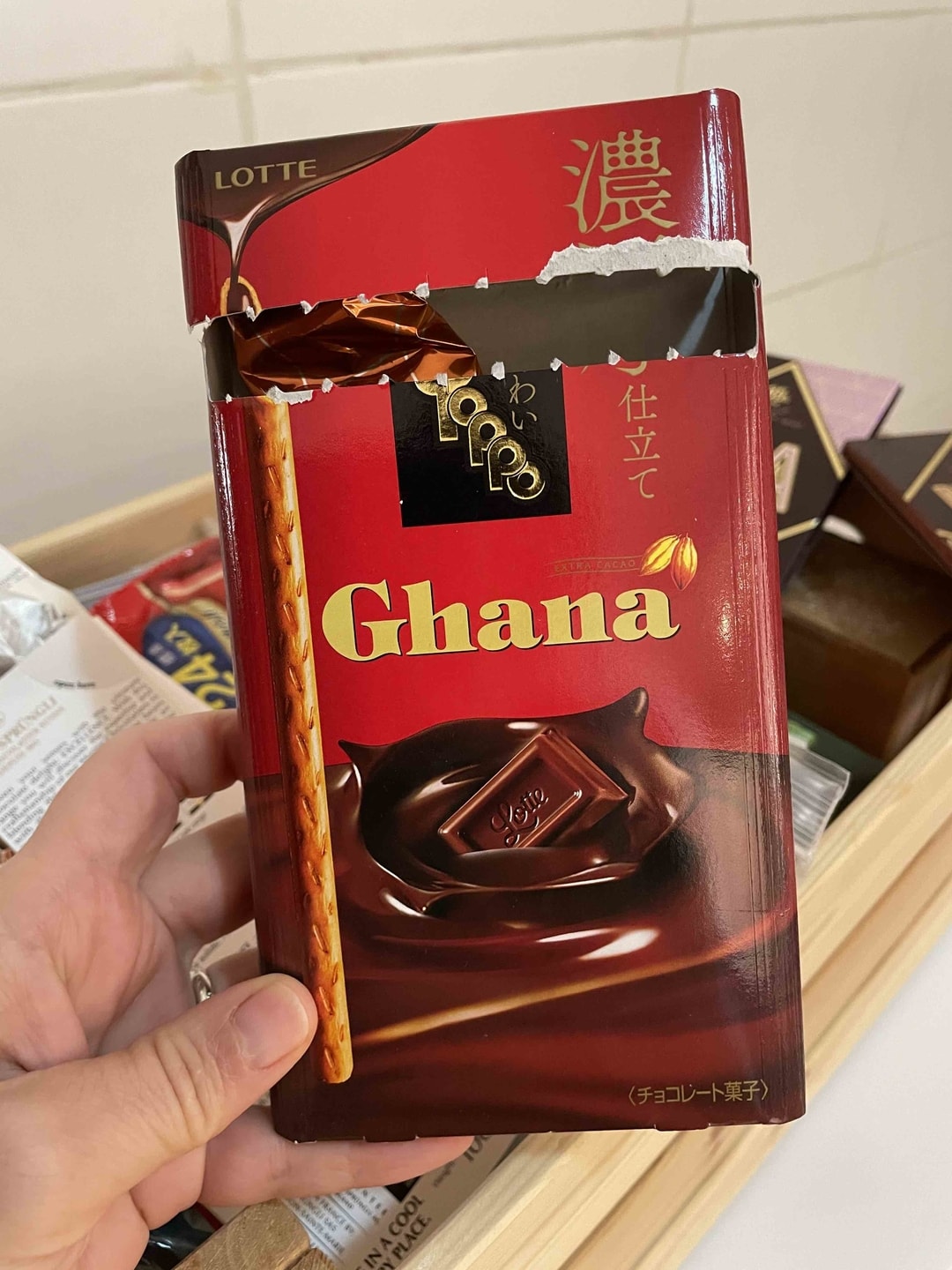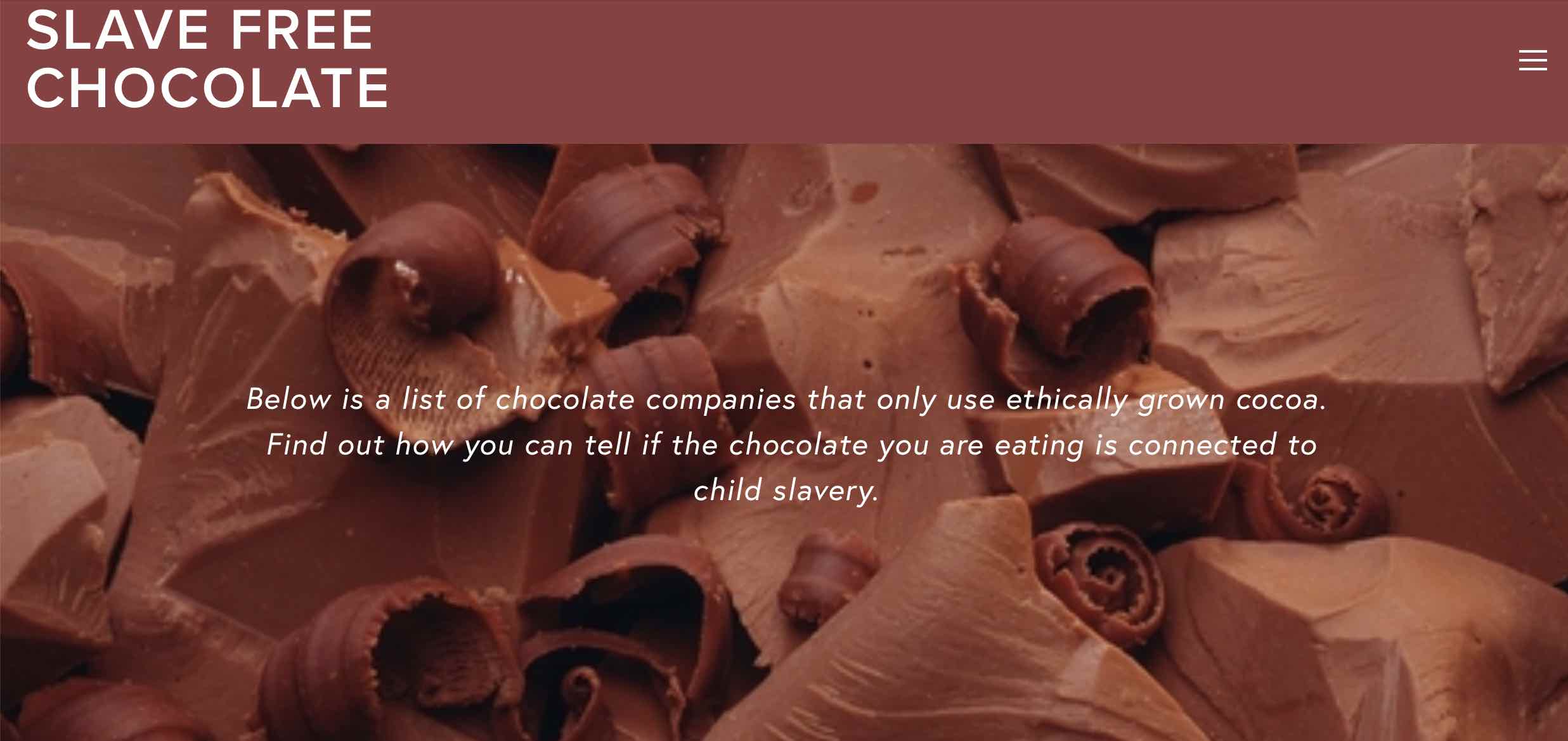I eat chocolate every day.
If my breakfast is oatmeal, I add a handful of chocolate chips (most recently: Callebaut Single Origin Sao Thomé 70%).
During the day, I snack on bars from a wooden crate in my kitchen (frequently in the crate: ’57 Chocolate, Lindt Excellence, Maison Kwame).
I buy Ritter Sport Butter Biscuit bars wherever I find them, and will eat a whole bar in five minutes.
When I am in the US, I eat Hershey’s Kisses and M&Ms.
When I am in the UK, I eat a lot of Divine. In South Africa, I look for Afrikoa.
Some of these chocolates are produced for the mass-market. Some have certification labels. Others would be called artisan or bean-to-bar.
I choose chocolate based on what is available, and what I like.
Because I have a public role as a chocolate expert, people often ask me about my favorite bar or brand. I don’t know if they really care what my favorite is. (After all, what could my preferences matter to their taste buds?)
I think they are actually asking me, “What chocolate should I eat to have no guilt/save the world?”
I used to reply with what I thought was the right answer: buy only expensive, artisan bars, from a maker who can tell you exactly where the beans came from, and who has shaken the hand of the farmer who grew them.
At some point, I realized this response was hypocritical, given my own chocolate-eating habits.

Why I stopped telling people to buy artisan chocolate
Telling people to “buy only artisan bars,” presumes a widely accepted dichotomy: that there is a fundamental difference in the industries behind artisan/small-batch/craft/bean-to-bar/fine/expensive chocolate (I use “artisan” as shorthand), and mass-market chocolate.
In my professional experience, this is a false dichotomy.
Let me be super clear that:
1) I am aware of several companies that truly do their best to conduct trade differently to the norm;
2) I recognize a distinction between the chocolates produced by artisans versus mass-market-oriented companies.
Artisan chocolate is generally made in small-ish batches, and the maker has some method for fine-tuning the manufacturing process to the variables of the raw material: cocoa beans (and other inputs, like the sweetener).
Mass-market chocolate is made at a large industrial scale, to a brand recipe that must be consistent worldwide, and is less tuned to the cocoa’s distinctions.
These methods produce very different chocolate experiences, and I happen to like both categories of product.
The false dichotomy is that there is an absolute, inherent, and automatic distinction in the trade practices, individual behaviors, and ethical mindsets of artisan versus mass-market supply and value chains.
Why should you believe me?
I started academic desk research into cocoa and chocolate in 2004, and my field experiences on farms and in factories began in 2005.
My work has mainly been in West Africa, especially Ghana, where I have researched in almost all the major cocoa-growing regions. As co-founder of the Cocoapreneurship Institute of Ghana, I work closely with many of the artisans in West Africa.
I’ve conducted field research in Sierra Leone, Ivory Coast, Uganda, Tanzania, South Africa, Hawaii, Malaysia, and Dominican Republic. I led a research project on Liberia’s cocoa industry, though I didn’t travel there myself.
I have an extensive network of colleagues who share professional insights from Africa, Europe, and North America.
In preparation for teaching and writing, I have conducted desk research (much of it historical) on Central and South America, and the Caribbean.
As Education Director for the Northwest Chocolate Festival from 2010-2013, I worked closely with artisan chocolate makers in the US and beyond.
I’ve worked on the trading side, marketing cocoa from sub-Saharan Africa. I consult regularly for NGOs, institutions, and companies that require research projects or field-based cocoa expertise.

Headline learnings
Over the years, I have observed the following, routinely and in different circumstances:
- The labor behind artisan and mass-market chocolate is pretty much the same.
- The people who work in mass-market and artisan chocolate are a mix. There are schmucks and dedicated justice pioneers on both sides.
- The presumed “features” of artisan chocolate—such as higher cocoa prices and transparency efforts—are not limited to artisan supply chains. They are also not straightforward forces for good that uniformly benefit farmers.
Artisan chocolate does not often carry certification labels such as Fairtrade, Rainforest Alliance/Utz, or Fair for Life. However, I’ve observed the same false dichotomy between mass-market and certified supply chains.
I will offer evidence to back up my claims in posts to come.
HOWEVER: nobody—including me—can give a 100% complete picture of the chocolate industry.
Around the world, there are millions of cocoa farmers, and more millions of chocolate lovers. It’s not possible to know everything about all of them, or even to reliably observe more than a fraction of exchanges along the value chain.
My knowledge is based on my experiences, and accounts from people I trust. As I said in my previous post, I welcome evidence that differs from mine. If you have a different experience to something I write about, I hope you will comment and share it.
Together, let’s build a fuller understanding of chocolate.




